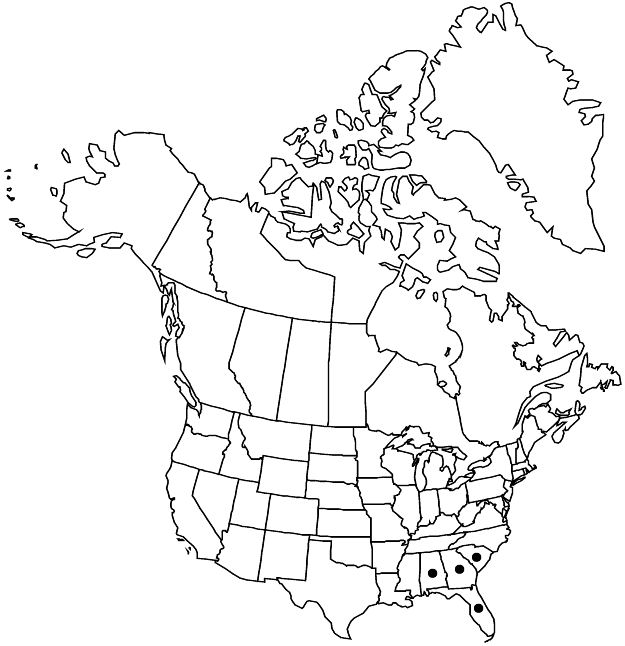Croton elliottii
Fl. South. U.S., 407. 1860.
Herbs, annual, 3–8 dm, monoecious. Stems usually single from base, then well branched from first reproductive node, appressed stellate-hairy. Leaves sometimes clustered near inflorescences; stipules absent; petiole 0.5–2 cm, glands absent at apex; blade lanceolate to oblong, 2–5.5 × 0.2–0.8 cm, base rounded, margins entire, apex subacute, abaxial surface pale green, not appearing brown-dotted, no stellate hairs with brown centers, densely long stellate-hairy, adaxial surface darker green, less densely short stellate-hairy. Inflorescences bisexual, congested racemes, 0.8–1.5 cm, staminate flowers 5–15, pistillate flowers 3–6. Pedicels: staminate 0.4–0.9 mm, pistillate 0–0.8 mm. Staminate flowers: sepals 5, 0.8–1 mm, abaxial surface stellate-hairy; petals 5, linear-oblong to lanceolate, 0.8–1 mm, abaxial surface glabrous; stamens 7–10. Pistillate flowers: sepals 6–7, equal, 5–6 mm, margins entire, apex incurved, abaxial surface stellate-hairy; petals 0; ovary 3-locular; styles 3, 2–3 mm, 2 times 2-fid, terminal segments 12. Capsules 4–5 mm diam., smooth; columella slightly 3-winged distally. Seeds 4–4.5 × 3–4 mm, shiny.
Phenology: Flowering Jul–Sep.
Habitat: Depression ponds, depression meadows, clay-based Carolina bays, usually on exposed pond edges or bottoms.
Elevation: 0–100 m.
Distribution

Ala., Fla., Ga., S.C.
Discussion
Croton elliottii is most closely related to C. capitatus.
Selected References
None.
Lower Taxa
"connate" is not a number. "distinct" is not a number.